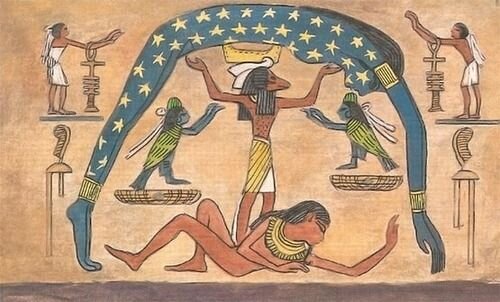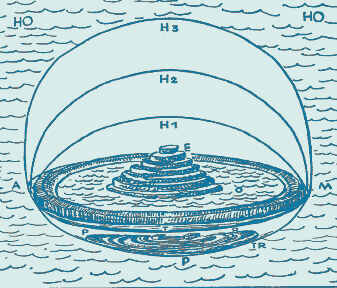3) You mentioned beginning by performing in classrooms! I love this. Was there a turning point when you had to consider performing in more intimate settings as well as larger venues?
Hmm, this might be a misquote. I began experimenting – both for myself, and with my collaborations with friends which later became Cloud Eye Control – by using classroom after-hours to be our experimentation and rehearsal spaces. Since our collaboration was Chi-wang (theater), Anna (music), and myself (animation) we were able to borrow bits of equipment (projectors, cameras, C-stands, speakers, cables) across departments, and also get some help, like asking a theater tech person to make a frame to hang fabric on with scrap metal around the shop. Having this time, space, and resources to play with was vital. It was often just a flow state of trying out stuff, making visual jokes, goofing around, leading tothing we found intereting and exciting.
With these playful experimentation, our collaboration made 3 pieces in the 3 years we were in grad school together; Ocean Flight, Subterranean Heart, and Final Space. These were basically all extra curricular – not made for a specific class or credit. And the explorations influenced me to make a performance of my own as my animation thesis project (Dreaming of Lucid Living). By the time we graduated, I/we had 4 short-form multi-media performances that we were able to start submitting to festivals. We were lucky that just a month after graduation, we performed at Platform Animation festival in Portland, and a month after that at TBA festival, again in Portland.
4) If you look back on your early years beginning your practice, what is some advice you would pass along to your younger self?
Hmm… I think there were many lessons that became clear after being out of school for a while. To look back and realize how important something was, even though I maybe didn’t realize it at the time. I guess my advice to my younger self would be to be aware of these and take advantage of them even further.
Take classes outside of your discipline. I took a puppetry class that really opened me up and made me want to explore animation beyond the screen, and manipulate animation with my body. Also thinking about the screen itself as an object and part of the narrative.
Build collaborations - they might turn in to the professional team that you work with for years after. What was valuable also was that as we began showing work outside of school. we had our 3 brains to figure out how to make it work: Budgeting, logistics, contracts, etc.
Play play play and make make make. No other time in your life besides school do you have access to space, equipment, potential collaborators, and teachers. It’s so hard to find many of those things after graduation.
Get feedback from a wide range of people. It was valuable that in my Integrated Media class, I was getting critiques of my work from not just animators and filmmakers, but also dancers, musicians, fine artists, writers, critical theory majors, etc etc. I feel like if you stay within your discipline, the critiques can get way too insular.
It was valuable that I had placed myself in an interdisciplinary realm with my work and CEC’s work - theater, film/animation, music. It meant we could look for a wider spectrum of potential opportunities.
Make completed projects while you’re still in school. Getting our work in to festivals right out the gate was important, since shows begets shows. Presenters learn about your work from shows, festivals, and other presenters.CEC got our first commission from doing the TBA (Time Based Arts) festival just the year before.
5) As a student beginning the process of writing grant proposals for a thesis performative installation piece, what do you find is an important thing to remember when writing proposals?
As far as proposals - I think it’s the visuals: research, reference, and proof-of concept experiments. I think taking the initiative to build a test version of some parts of your project really helps, maybe more than what you can say.



























